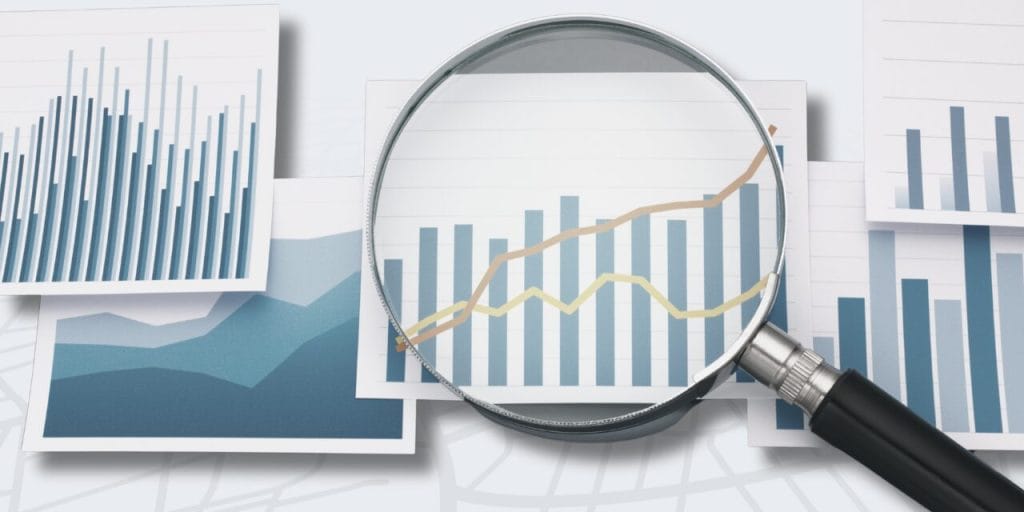The end of June marks the critical halfway point of 2025. With Q2 closing and planning underway for the second half of the year, sales leaders face a pivotal question: Are you positioned to accelerate toward year-end targets? Or are performance gaps threatening your annual goals?
Mid-year represents when momentum either compounds into success or stagnates into missed opportunities. Process inefficiencies prevent field sales leaders from seeing team performance clearly, creating three critical failures:
- Territories remain unoptimized
- Coaching becomes reactive rather than proactive
- Resource investments lack justification during budget planning cycles
The solution requires visibility frameworks that transform scattered data into revenue acceleration. Four interconnected capabilities create accountability systems that drive measurable outcomes.
The Four Pillars of Field Sales Visibility
Field sales visibility separates high-performing teams from struggling ones. Complete visibility transforms scattered data into strategic insights that drive revenue growth.
- Real-time activity tracking: Monitor rep locations, customer interactions, and time allocation to eliminate inefficiencies and boost productivity.
- Data-driven KPI implementation: Track conversion rates, pipeline velocity, and revenue metrics that predict quarterly performance rather than report past results.
- Territory optimization: Allocate leads and optimize routes based on data analysis to maximize high-value opportunities while reducing windshield time.
- Performance transparency: Create accountability through sales leaderboards and coaching triggers that identify top performers and improvement opportunities instantly.
Without these four pillars, sales teams struggle with territory blind spots, reactive coaching, and unpredictable forecasting. Complete visibility transforms these operational challenges into measurable performance gains.
Pillar 1: Real-Time Activity Tracking
Imagine knowing exactly where your reps are, which customers they’ve visited, and how effectively they’re using their time—all in real time. Real-time visibility eliminates inefficiencies like redundant routes or missed follow-ups while fostering accountability.
Key benefits include:
- Route optimization: Optimized routes tools reduce windshield time and allow reps to prioritize high-value leads. This not only saves time but also increases deal closures.
- Proactive coaching: Managers spot inefficiencies (e.g., excessive time at low-priority accounts) and provide targeted feedback during daily standups or one-on-one sessions.
- Accountability: GPS tracking ensures reps are where they need to be while maintaining transparency.
- Customer trust: Accurate ETAs improve punctuality, reducing late arrivals and boosting client satisfaction.
GPS-Based Sales Performance Monitoring Tactics
Configure location tracking to capture meaningful productivity data, not just surveillance. Set geographic boundaries using ZIP codes or custom polygons to define territories precisely. For example, in SPOTIO, managers can establish territory alerts that trigger notifications when reps enter competitor locations or spend excessive time in low-priority areas.
Activity Classification
Create specific activity categories that align with your sales process:
- Customer-facing time: Direct prospect interactions, demos, presentations
- Travel optimization: Route efficiency between appointments
- Administrative tasks: Data entry, report completion, follow-up communications
- Prospecting activities: Cold calls, door-to-door canvassing, lead qualification
Real-Time Dashboards
Design dashboards that surface critical metrics instantly. Track visit duration, appointment completion rates, and territory coverage in real-time. SPOTIO’s mobile dashboard allows managers to monitor team activities without overwhelming reps with micromanagement, focusing on outcomes rather than surveillance.
Pillar 2: Data-Driven KPI Implementation
Visibility transforms vague goals into actionable plans by providing access to real-time data on pipeline health, quota progress, and team performance. To ensure your strategy is truly data-driven, tracking the right Key Performance Indicators (KPIs) is essential. Here are critical KPIs every sales leader should monitor to drive performance and revenue growth:
Revenue Performance Indicators
- New revenue, year-on-year (YoY) growth: Track revenue generated from new clients compared to the same period last year. This foundational metric provides clear visibility into whether your sales efforts are expanding your customer base and increasing revenue over time. Segment this data by territory, rep, and customer type to identify growth patterns and optimization opportunities.
- Contract value analysis: Monitor the value of deals in your pipeline to improve forecasting accuracy and resource allocation. Track both average deal size trends and total pipeline value to ensure you’re focusing on high-value opportunities while maintaining a healthy balance of smaller deals that provide consistent revenue flow.
- Close-win rate (conversion rate): Measure the percentage of sales-qualified leads that convert into closed deals. This vital metric assesses lead quality and closing effectiveness. A declining close-win rate may indicate issues with lead qualification, sales techniques, or territory management that require immediate coaching intervention.
Revenue-Driving Activity Metrics
- Call volume and quality tracking: Monitor both quantity and outcome-focused metrics. Track calls per day alongside conversion rates to identify high-performing behaviors versus busy work. Measure talk time, follow-up consistency, and appointment-setting ratios rather than just dial counts. Focus on activities that directly correlate with revenue generation.
- Sales pipeline velocity tracking: Track deal progression speed across sales stages. Monitor time-to-close, stage conversion rates, and deal size trends to identify bottlenecks that slow revenue generation. Focus on metrics that predict quarterly performance rather than lagging indicators. This connects directly to your contract value tracking for comprehensive pipeline health.
- Lead response time optimization: Track speed from lead assignment to first contact. Monitor both individual rep performance and system-wide response capabilities. Set automated alerts when response times exceed acceptable thresholds. Fast response times directly impact your close-win rates and overall conversion effectiveness.
- Number of new sales leads in pipeline: Monitor this top-of-the-funnel metric to ensure your team consistently generates enough leads to meet future sales targets. A steady flow of new leads is crucial for maintaining healthy pipeline velocity and achieving long-term growth. Track lead quality alongside quantity to optimize conversion rates.
Territory and Efficiency Metrics
- Territory coverage optimization: Calculate time-per-prospect ratios to identify territory imbalances that impact overall productivity. Measure geographic efficiency through route planning effectiveness and customer visit frequency. Track coverage gaps that indicate missed opportunities or inefficient resource allocation.
- Time spent selling vs. administrative activities: Sales reps should spend the majority of their time on high-value activities like prospecting, follow-ups, and meetings. Calculate time spent on non-selling activities like data entry, report generation, and travel planning. Track the percentage of time spent on revenue-generating activities versus administrative tasks. Selling time should ideally exceed 80% of their workday.
Relationship Quality Indicators
- Customer retention metrics: Measure repeat business rates, upsell success, and customer satisfaction scores. Track relationship quality indicators that predict long-term account value and expansion opportunities. Strong retention metrics directly support your YoY growth targets and contract value optimization. Just a 5% increase in customer retention results in 25-95% increase in revenue.
This comprehensive KPI framework connects operational activities to revenue outcomes, ensuring every metric tracked contributes to measurable business growth. Focus on metrics that enable coaching, optimize territories, and accelerate pipeline velocity rather than vanity metrics that don’t drive financial results.
Pillar 3: Territory Optimization Strategies
Effective sales territory optimization is critical for maximizing sales team productivity and ensuring high-value opportunities are prioritized.
Follow these steps:
- Territory design. Clear boundaries are essential to avoid confusion and ensure reps know exactly where to focus their efforts. Use mapping tools to create visual territory boundaries based on geographic areas, customer segments, or revenue potential. In SPOTIO, color-coded territories prevent overlap while allowing managers to visualize performance data for each territory in real-time. This not only prevents overlap but also allows managers to visualize performance data for each territory in real time.
- Performance monitoring. Establish territory-specific KPIs including sales per client, pipeline health, and average deal size. Create automated reports that track these metrics weekly and monthly to identify trends and opportunities.
- Route optimization. Configure GPS-enabled tracking to monitor rep activities within assigned territories. Track travel paths, customer visits, and time spent with prospects to identify inefficiencies and suggest more productive routes.
- Data-driven adjustments. Use performance data to adjust territory boundaries when needed. If a rep’s workload becomes unmanageable due to increased leads, split the territory and reassign portions based on data-driven analysis. Suggested criteria are below.
Territory Performance Analysis
Create standardized evaluation criteria:
- Coverage efficiency: Percentage of target accounts contacted monthly
- Revenue per square mile: Geographic productivity measurement
- Customer density optimization: Prospect-to-customer conversion by area
- Travel time ratios: Selling time versus windshield time analysis
Pillar 4: Performance Transparency
Sales leaderboards aren’t just motivational—they’re strategic tools that provide transparency into individual and team performance metrics.
- Gamification increases productivity by up to 50%.
- Peer benchmarking encourages low performers to mimic top reps’ tactics.
- Public recognition of milestones reduces turnover by 14%.
Sales Leaderboard Implementation
Design leaderboards that motivate without creating unhealthy competition. Track multiple performance dimensions:
- Activity metrics: Calls, visits, demos completed
- Outcome metrics: Deals closed, revenue generated, pipeline advancement
- Efficiency metrics: Conversion rates, cycle time, territory coverage
Coaching Trigger Setup
Establish automated alerts that identify coaching opportunities:
- Performance gaps: When individual metrics fall below team averages
- Trend analysis: Declining performance over consecutive periods
- Opportunity identification: High activity with low conversion rates
Track milestones and recognize achievements:
Create systematic recognition for achievements beyond just revenue:
- Consistency awards: Meeting activity targets over extended periods
- Improvement recognition: Significant performance gains month-over-month
- Team collaboration: Supporting colleagues and sharing best practices
Your Acceleration Action Plan
Transform field sales productivity through visibility frameworks that drive revenue growth. Mid-year demands decisive action. Scattered data won’t accelerate your team’s performance, but comprehensive measurement systems will.
Start your acceleration:
- Audit your pipeline using real-time reports to flag stale deals and underperforming territories
- Optimize routes through data-driven path planning that cuts windshield time
- Create accountability with performance transparency that drives consistent results
Begin with real-time activity tracking, then progress through KPI implementation. Optimize territories using data insights and create transparency that drives accountability. This approach connects daily activities to quarterly outcomes while positioning your team for sustained success.
Which visibility gap threatens your sales targets most? Territory blind spots, activity inefficiencies, or accountability challenges?
Ready to transform scattered data into revenue-driving insights? Get a SPOTIO demo and see what your team can achieve with complete field sales visibility.




